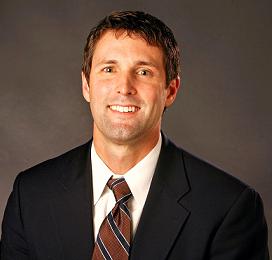 Dr. Geier is an orthopaedic surgeon and sports medicine specialist in Charleston, South Carolina. He also serves as chairman of the Public Relations Committee for the American Orthopaedic Society for Sports Medicine.
Dr. Geier is an orthopaedic surgeon and sports medicine specialist in Charleston, South Carolina. He also serves as chairman of the Public Relations Committee for the American Orthopaedic Society for Sports Medicine.
ACL reconstructions have good success rates for injured athletic individuals. Fear of reinjury has been shown to be fairly common in athletes, though, especially among those who struggle to return to sports. A new study presented at the American Orthopaedic Society for Sports Medicine’s Annual Meeting in Chicago suggests that these fears of reinjury might be justified.
Mark V. Paterno, PhD, PT, SCS, ATC and others from the Cincinnati Children’s Hospital compared data from 78 patients aged 10 to 25 who underwent ACL reconstruction (ACLR) to 47 healthy control subjects. They followed both groups of athletes who played sports that require cutting or pivoting movements for 24 months.
Results:
The authors found that young athletes who underwent ACL surgery were significantly more likely to suffer a second injury. Specifically:
• During the 24-month study period, 29.5% of the athletes with a history of ACLR and 8.5% of the control athletes suffered an ACL injury.
• The overall incidence rate of a second ACL injury was nearly 6 times greater than the rate of ACL injury among the healthy control subjects in that 24-month period.
• Within the ACLR group, female athletes were more than twice as likely to tear the ACL in their contralateral knee rather than the graft in the surgical knee.
• Athletes in the ACLR group who suffered another ACL injury did so soon after they returned to play. 30.4% were injured in less than 20 athlete-exposures (AE), and 52.2% were injured in less than 72 AEs.
“In our study, female athletes after ACLR demonstrated more than four times greater rate of injury within 24 months than their healthy counterparts. This data highlights the fact that ACLR patients who return to playing sports are at greater risk for injury and should take appropriate precautions to prevent injury,” Dr. Paterno concluded.
It is worth pointing out that 125 athletes - 78 with a history of ACLR and 47 controls – make up a fairly small sample size. Plus the researchers focused on athletes aged 10 to 25 who aimed to return to competitive sports. For these reasons, their findings might not apply to patients needing ACL surgeries among the population as a whole.
Implications for athletes:
Obviously these numbers are concerning. One of the main goals of ACL surgery is to allow athletes to return to their sports. Reinjury of the surgical knee or injury to the opposite one not only could jeopardize an athlete’s future in sports but also the long-term health of his or her knee.
As the authors suggest in their paper, we might need to approach the rehab and return to sports criteria more carefully. Over 30% of the athletes who suffered a second injury did so in the first 20 games or practice sessions after returning to play. That finding suggests that the athletes might not have sufficiently recovered strength and functional ability.
Also this data highlights the importance of aiming to correct the risk factors that can lead to ACL tears in the first place. ACL injury prevention programs that teach proper landing and turning mechanics might not prevent every injury. Even a slight decrease in risk would be helpful, though. Plus these improved techniques are equally important as athletes return to play.
Clearly much more research is needed to explain why ACL recurrence rates are this high. We will also need to continually improve our surgical techniques, physical therapy programs and return to sports criteria to improve our results and help keep athletes in the game.


